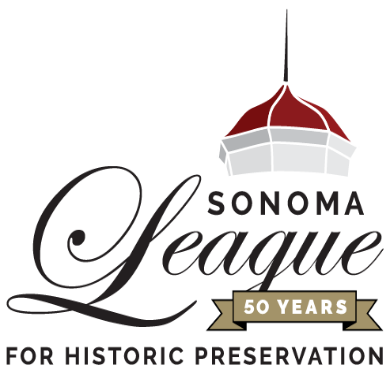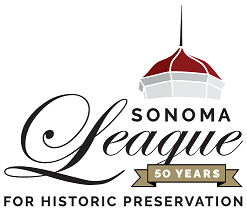Architectural Heritage
Sonoma’s early architecture was derived from the Hispanic frontier traditions of Mexico. The earliest buildings were adobe, constructed adjacent to the Central Plaza in the 1830s and 1840s. These first buildings had earthen floors and walls, openings for windows and doors, and a separate building or lean-to for a kitchen - a spartan existence by today’s standards. Although it was a slow, laborious process to mold the thousands of adobe mud bricks needed for a single structure, adobe was quite adaptive for use in an undeveloped area such as Sonoma, being always available and requiring a only elementary skills for construction. By the time of the Pueblo days, the adobes had evolved; innovations brought redwood framing, two-story structures, plastered walls, fireplaces, wood or tile flooring and window glass. They all stand as witness to the growing American influence in California prior to statehood.
Although California had plenty of virgin timber, there were few lumber mills or means to transport the lumber for many years. A few of the wood frame houses were prefabricated in New England and shipped in sections around the Horn. The general use of wood for construction was not begun until the 1850s, when the lumber industry became established. In the 1880s to the early 1900s, another style, somewhat characteristic of Sonoma, evolved from the use of local, hand-cut, rusticated stone.
Sonoma is fortunate in having more adobes still existing than any other California locale north of Monterey. These few survivors are valuable representatives of Sonoma’s development from the time it began with the Mission, which was the final expression of the Spanish frontier Mission tradition. In Sonoma’s post-Mission era, adobes were patterned after the two-story balconied, shake-roofed, American-built, and owned, adobes were created in California’s early capital at Monterey. Most of the adobes around the Plaza became hotels or boarding houses due to the housing shortage during the Gold Rush.
Over the years, practically every structure of historical significance in Sonoma has been either remodeled, altered, damaged or rebuilt, or even moved to another location.

